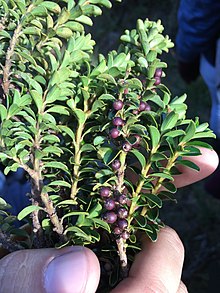| Parathesis | |
|---|---|
 | |
| Scientific classification | |
| Kingdom: | Plantae |
| Clade: | Tracheophytes |
| Clade: | Angiosperms |
| Clade: | Eudicots |
| Clade: | Asterids |
| Order: | Ericales |
| Family: | Primulaceae |
| Subfamily: | Myrsinoideae |
| Genus: | Parathesis (A.DC.) Hook.f. |
Parathesis is a genus of flowering plants in the family Primulaceae. There are about 95 species distributed from Mexico to South America and the Caribbean. Plants of this genus can be distinguished by glandular papillae on the lobes of the flower corolla and bright yellow anthers. [1]